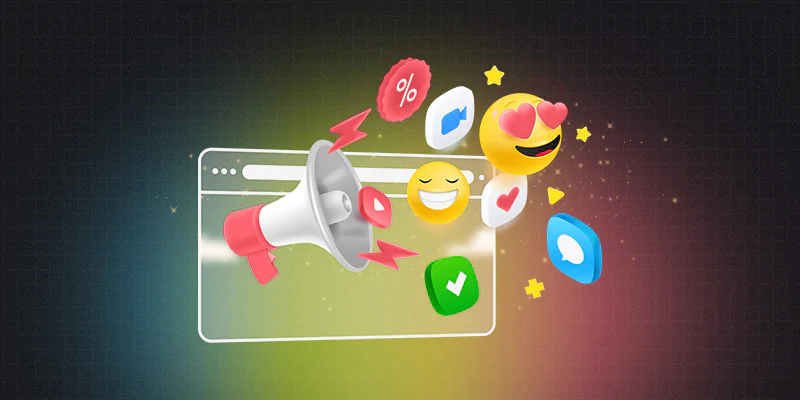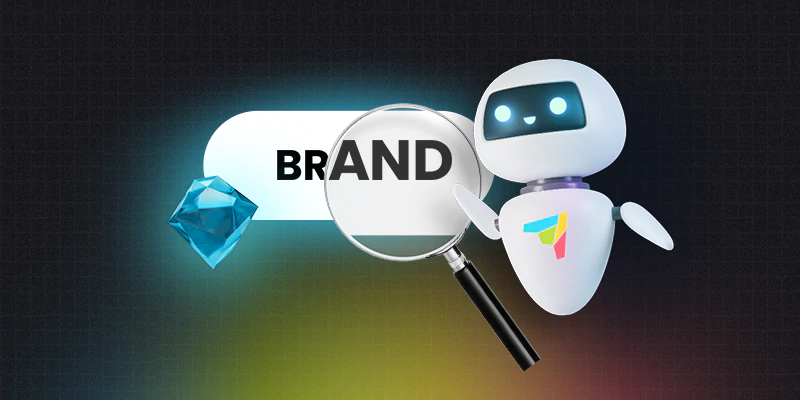
By Mike Kresch, VP Strategy
At a recent family function, I was having a nice conversation with my nine-year-old niece. She asked me what I did for work. I tried to keep the answer simple: I told her that I worked in marketing.
“What does that mean?” She asked.
A very smart question that got me thinking.
Back when I was in business school, the response to her question was a lot simpler. Marketing was defined holistically by a clever alliteration: the five Ps (product, price, place, promotion, and people). Today’s world isn’t as simple. Marketing is more nuanced and doesn’t fit as cleanly into this definition. Yes, it still starts with a product, and remains an integrated discipline. But the rest of the story is significantly more complex.
I contend that there are now seven essential functions of marketing: Product, Finance, Intelligence & Data, Brand, Content, Distribution, and Promotion. While each of these functions is essential and plays a distinct role in a marketing department’s success, one key factor remains consistent over time: at its core, marketing is a discipline with interconnected functions that, when executed together, drive sustainable growth.
In this blog, I’ll answer my niece’s question and explore the seven essential functions of marketing as they relate to today’s realm.
Product: The Foundation of Every Marketing Effort
Marketing begins, and ultimately succeeds, with amazing products and services. No amount of ad spend, content, or clever messaging can compensate for a product that doesn’t deliver value or solve a real problem.
The right approach to product marketing means asking hard questions before the first campaign dollar is spent: Does this product solve a meaningful problem? Does it surprise and delight its users? Is the value proposition clear and differentiated from competitors? Answering these questions requires both market intelligence and self-awareness.

When the product is right, every other marketing function gains leverage. Distribution gets easier, promotion becomes more efficient, and brand trust compounds. Product is where great marketing truly starts. Agencies like Moburst play a critical role here. Our product team analyzes user journeys, identifies friction points, and tests new messaging. In this way, we help our clients shape not just how a product is marketed, but how it evolves. Look no further than this Moburst <> BAZZ case study to see the quantifiable impact of product improvement.
Want to Build Products Users Actually Love?
Moburst’s Product Strategy and UX Optimization services help brands refine user journeys, reduce friction, and unlock higher conversion rates, before the first campaign dollar is spent
Finance: Marketing as an Investment
Marketing is often seen as an expense line on a budget, but the truth is that it’s an investment vehicle. Finance in marketing is about ensuring that every dollar spent has a measurable purpose and every initiative is tied to business outcomes. Whether it’s paid campaigns, influencer partnerships, or content production, the financial function demands rigor: ROI modeling, forecasting, and a deep understanding of customer lifetime value (LTV).
At Moburst, this means being transparent with clients about how budgets are allocated and what returns to expect. In today’s uncertain climate, it’s not about spending more; it’s about spending smarter. A $50K influencer campaign without financial discipline can vanish into vanity metrics. The same $50K, managed through tight performance tracking, can scale into millions in revenue.
Finance in marketing also shapes strategic choices. Should we double down on organic because the cost per acquisition (CAC) on paid is spiking? Should we reinvest profits into expanding distribution channels? The financial lens ensures these decisions aren’t guesses, but data-driven investments.
Ultimately, finance keeps marketing accountable and transforms it from a cost center into one of the most powerful drivers of growth.
Intelligence & Data: The Compass for Decision-Making
In today’s digital landscape, marketing without data is little more than guesswork. Intelligence and data form the proverbial compass that guides every decision, from product development to promotion. Agencies must master this function, not only by collecting data but by transforming it into smart, actionable insights.

This starts with knowing what to measure. Vanity metrics such as likes, impressions, or downloads can mislead. What matters is understanding user behavior, conversion pathways, and how different audiences interact with a brand across channels. By connecting analytics, CRM, and attribution models, intelligence provides a much better picture of performance.
But data’s role goes beyond reporting. It’s predictive. With the right intelligence, brands can anticipate shifts in consumer behavior, identify emerging segments, and optimize spend in real time.
Are You Getting the Most Out of Your Budget?
We turn data into performance through advanced targeting and real-time optimization
Brand: The Strategic Anchor
Brand is more than a logo, tagline, or color palette. It’s the sum of how customers perceive a company. That perception drives trust, loyalty, and ultimately, conversion. In a digital-first world where competition is fierce and attention is scarce, brand is the anchor that ensures every marketing effort is coherent and credible. Strong brands align messaging, visuals, and values into a consistent identity that resonates with their audience. I continue to be amazed at the lack of attention branding receives from some companies; invariably, it comes back to haunt them.
For agencies like Moburst, the brand function means ensuring that every performance tactic connects back to the larger story. Is this content reinforcing our positioning? Is this promotion aligned with our tone and promise? Without a clear brand framework, even the best tactics feel fragmented.
Make no mistake: Brand work impacts a company’s bottom line. A well-managed brand reduces acquisition costs, accelerates word-of-mouth, and increases lifetime value. When consumers know what you stand for and feel aligned with it, the path to purchase is shorter, and repeat engagement is higher. Brand is the multiplier that makes all other functions more effective.
Is Your Brand Reaching the Right Audience?
We craft winning strategies across SEO, AEO (AI SEO), ASO, content, and media buying
Content: Fuel for Connection
At the risk of sounding cliché, if brand is the anchor, content is the fuel. Content gives form to the brand story and carries it across every channel— from a 15-second TikTok to a 3,000-word thought-leadership article. It’s through content that audiences learn, engage, and connect with a product or service.
The right content meets the right audience at the right stage of the journey. Educational blog posts build awareness. Case studies nurture consideration. User-generated videos drive trust and conversion. Content must be mapped to the funnel and aligned with clear objectives.

Agencies like Moburst bring discipline here by ensuring content is both creative and measurable. It’s not enough for content to “look good”; it also needs to perform. This means A/B testing headlines, analyzing engagement, and understanding which formats resonate best across platforms.
At its best, content doesn’t feel like marketing. It feels like value: a helpful guide, an entertaining story, or a moment of inspiration. When done right, content not only fuels campaigns but builds enduring relationships that make promotion more efficient and distribution more organic.
Distribution: Getting in Front of the Right Eyes
The distribution function ensures that a brand’s message, product, and story reach the right audiences in the right places. In today’s fractured media environment, distribution is both art and science.
This includes owned channels (websites, apps, email lists), earned channels (PR, partnerships, organic social), and paid channels (search, social ads, influencer collaborations). The challenge isn’t just choosing where to distribute, but orchestrating how these channels work together to maximize reach and impact.
For agencies like Moburst, distribution strategy means constantly balancing efficiency and scale. Is TikTok driving awareness more cost-effectively than Instagram? Should we double down on SEO and AEO because they compound results over time? By aligning channel choices with brand goals and financial realities, distribution ensures the message isn’t just broadcast but received.
The best distribution systems create feedback loops. Every click, view, and share informs the next investment. Over time, distribution evolves from trial-and-error to a finely tuned engine that consistently delivers the brand story where it matters most. A great illustration of strong distribution can be found in this Moburst <> Shopkick case study.
Promotion: Turning Attention into Action
Promotion is the function most people immediately associate with marketing—specifically, the ads, campaigns, and physical activations that drive visibility and sales. Here’s the key point: effective promotion is infinitely more than blasting messages. It’s the strategic use of both paid and organic levers to move audiences from awareness to action.
Promotion requires a blend of creativity and precision. Paid campaigns can generate instant reach, but they need sharp targeting and constant optimization. Organic promotion like social engagement, influencer collaborations, and community building takes longer but compounds into lasting trust and advocacy. The best holistic strategies are integrated, balancing both, and ensuring short-term wins don’t come at the expense of long-term equity.

Agencies like Moburst bring value here by connecting promotion back to the bigger picture. A viral campaign is meaningless if it doesn’t drive business outcomes. A high CTR is just a number unless it translates into retention and revenue. Promotion works when it’s aligned with product strengths, brand positioning, and the data guiding spend. Look no further than this Moburst<>Abide case study to see this alignment work, first-hand.
Conclusion: Why the Seven Functions Matter
Product, Finance, Intelligence & Data, Brand, Content, Distribution, and Promotion are not silos. They are interdependent gears in the same machine. When they work together, the result is momentum that compounds: stronger products, smarter investments, sharper insights, trusted brands, valuable content, efficient distribution, and impactful promotion.
In this respect, our job at Moburst is to help brands like yours avoid silos and think holistically, ensuring that every effort leads to a unified vision of growth. That’s the difference between fragmented marketing spend and marketing that truly turns brands into category leaders. Explore our digital marketing services to learn more about how we can support your brand’s vision.
Ready to Experience Hypergrowth?
Partner with Moburst to scale faster with a full-funnel marketing strategy built to win
FAQs
The classic five Ps—product, price, place, promotion, and people—were helpful in earlier eras, but today’s marketing is more nuanced. Finance, intelligence & data, brand, and content now play distinct roles that deserve recognition alongside product, distribution, and promotion.
Promotion is only one of the seven functions. It focuses on turning attention into action through ads, campaigns, and activations. True marketing connects all seven functions to create a cohesive growth engine.
Intelligence & data act as the compass for decision-making. Rather than relying on vanity metrics, modern marketing tracks behavior, conversion paths, and predictive insights to guide smarter investments and anticipate customer needs.
Your branding is the anchor that ties everything together. It shapes perception, drives trust, and makes every other function more effective. A strong brand lowers acquisition costs, accelerates word-of-mouth, and builds loyalty.
They are interconnected gears. A strong product makes distribution easier. A trusted brand makes promotion more efficient. Data informs content strategy. Finance keeps it all accountable. The synergy of these functions drives sustainable growth.






